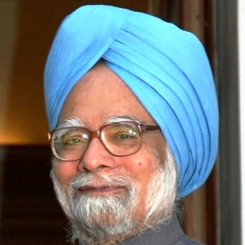By Shastri Ramachandaran* | IDN-InDepth NewsAnalysis
NEW DELHI (IDN) – India’s performance on the world stage in 2013 is the last act of dismal show before the curtain comes down on Manmohan Singh’s ten years as Prime Minister in May 2014.
In his second term beginning with 2009, Singh succeeded in undoing his own achievements on the foreign affairs front and of the United Progressive Alliance (UPA), a coalition of left political parties. The descent from the peaks scaled in 2004-2009 has been so steep in the last few years that 2013 is viewed as a disastrous year for foreign policy: perhaps, the worst in 15 years.
The first United Progressive Alliance (UPA 1) was formed after the 2004 general election. It is headed by the Indian National Congress (INC), whose president Sonia Gandhi is also the chairperson of the UPA. Subsequently the Prime Minister of India, Manmohan Singh, and the Council of Ministers are drawn from six other small members of the UPA.
Soon after assuming office, the good doctor took a decisive step to secure the “defining partnership of the 21st century” (with the US). The India-US nuclear deal was the opening gambit – not the sum and substance – of a rising India’s ambition to join the global power elite; to move up from being a leader of the developing (non-aligned) nations to the status of preferred partner of the world’s only superpower.
With the support of President George Bush, Singh set out to win India a place at every high table and in nuclear regimes. On the strength of an enviable growth rate, economic reforms, weathering the global financial downturn, an attractive investment climate and rising stature in the neighbourhood, the region and the world at large, it seemed that India was, at last, on the destined path to take its place in the comity of nations.
Singh was lauded for his reforms at home and accomplishments abroad. If the goal of foreign policy was to build India’s prosperity and strength, Singh was seen as taking the right steps.
Prospects of peace in the neigbourhood made New Delhi generously recognise that India should give more than it receives from its poorer and weaker neighbours.
Previous achievements
UPA I brokered peace in Nepal and brought Maoists to the parliamentary mainstream; it initiated the composite dialogue with Pakistan; kept Sri Lanka and Maldives firmly on our side and took India-Bangladesh relations to a new high. In the region, India’s Look East Policy, initiated by PV Narasimha Rao, went beyond ASEAN to Japan, South Korea, Australia and the Indo-Pacific.
Singh’s rapport with the Chinese leadership boosted economic ties, opened new tracks of cooperation and positioned the two as partners who could drive the global economic recovery. UPA I saw India sign strategic partnership and comprehensive economic cooperation agreements with many countries including the US, Australia, Japan, South Korea, Indonesia and Vietnam.
All these came unstuck under UPA II (formed after the 2009 elections), with 2013 witnessing the worst. Economic growth took a hit. Recession, inflation and corruption further eroded the climate for investment and infrastructure development, and the world took a dim view of India.
The year began with Pakistan’s beheading of an Indian soldier, which ended the composite dialogue process. In Nepal, China increased its influence thanks to New Delhi’s “mismanagement”. For the first time ever, Bhutan had a public issue with India, which did not redound to New Delhi’s credit. India-Bangladesh relations took a dive with New Delhi unable to sign the promised agreements on land boundary and sharing of Teesta waters. Anti-India forces in Bangladesh are gaining and India’s friends feel abandoned.
CHOGM (Commonwealth Heads of Government Meeting) in November in Colombo was a diplomatic disaster in the wake of earlier Indian actions against Sri Lanka in international forums. UPA II’s indecisive leadership was further exposed with Union ministers contradicting one another on India attending CHOGM. Events and developments in the Maldives – from the loss of Male airport contract by eminent Indian infrastructural company to the conduct of elections – show how effete UPA II has become. India-US relationship, the cornerstone of Singh’s foreign policy, is at its lowest point after 1998.
Former foreign secretary Lalit Mansingh points out that these fiascos do not add up to failure of foreign policy as such. “It is failure of foreign policy management,” said Mansingh, adding that 2013 was a bad year in general for the economy, the UPA and the country.
*Shastri Ramachandran is an independent journalist based in New Delhi. A version of this article first appeared on January 1, 2014 on DNA and is being published by arrangement with the writer. [IDN-InDepthNews – January 01, 2014]
2014 IDN-InDepthNews | Analysis That Matters
Photo: Prime Minister Manmohan Singh | Credit: .Delhi Pradesh Congress Committee
Shastri Ramachandran’s previous IDN articles:
http://www.indepthnews.info/index.php/search?searchword=shastri%20ramachndran&ordering=newest&searchphrase=any
Send your comment | Subscribe to IDN newsletter
Follow us on Twitter and Facebook:
http://twitter.com/InDepthNews
http://www.facebook.com/IDN.GoingDeeper

